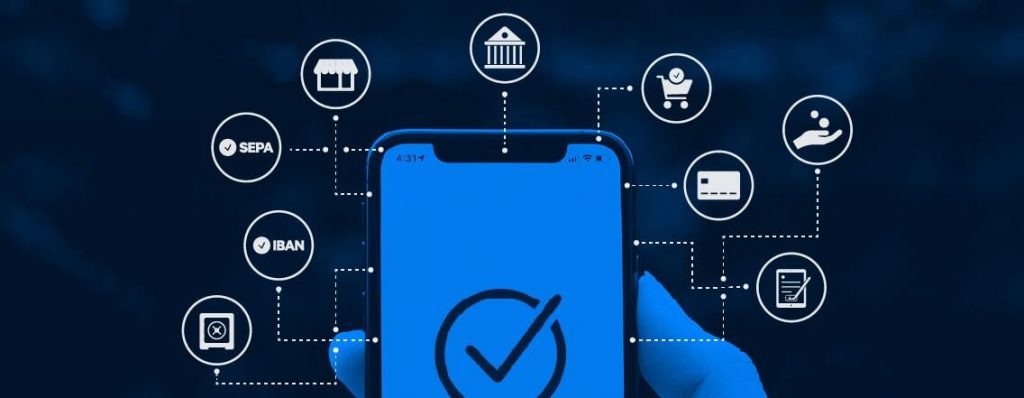
The digital transformation of the banking industry is one of the more important stories of the 21st century. Just as cash payments themselves are essentially a thing of the past, so too are physical branches and in-person banking. In modern banking, digital technology is utilized to improve the customer experience, to increase operational efficiency, and to innovate a system that has been largely unchanged since the Medici family was running Italy in the 15th century.
There are a number of ways in which the digital transformation is changing the banking sector. We’ve talked about a number of them in these articles, and it largely follows the trends taking place in every sector in the modern world. When it comes to banking, digital transformation can be slow and cumbersome, as the industry itself is so mired in the ways of the past. It also by necessity needs to be slow and careful, as you can’t afford to take risks with customer’s financial data.
What does digital transformation mean exactly when it comes to the banking sector?
The key features that characterize the digital transformation of the banking sector are:
1. Digital Onboarding and Know Your Customer (KYC)
Engagement with a bank used to rely on the way a teller spoke with a customer who walked into the bank. Now, banks connect with customers over digital channels, including mobile apps and websites, giving them a more personalized and convenient experience. Digital transformation in banking really began originally with digital customer acquisition, and the banking policy of KYC means that banks have been forced to go through digital transformation in order to meet their customers’ needs.
2. Automation of Processes
Many things that used to be manual and time consuming processes can be automated, including loan applications and account management. This increases efficiency, reduce costs, and allows employees to focus on issues where their expertise can be utilized for effectively.
3. Data-Driven Decision Making
Data and analytics can be harnessed to make more informed decisions, including regarding issues such as identifying potential fraud or developing new products and services.
4. Mobile Banking
Mobile Banking is perhaps the most notable element of digital banking, where the majority of a customer’s transactions and bank-related activities can be performed on the bank’s mobile app, including all variety of financial services and account management.
5. Cybersecurity
Just as protecting physical banks from theft was critical in the old world, a “digital Fort Knox” is now essential for modern banking, to protect cyber attacks, theft, and customer data.
6. Artificial Intelligence and Machine Learning
Artificial intelligence and machine learning are ways that banks can automate what used to manual processes, and to improve customer engagement as well as detect fraud. Of course, AI and machine learning also are a part of banking products that customers rely on, providing things like recommendations based on customers’ behavior and transaction history to improve their experience overall.
7. Open Banking
Open banking is one of the primary means through which banks can undertake digital transformation. Essentially, open banking is what enables this crucial digital transformation to occur, and it’s what we’ll be focusing on in this article. But first let’s take a step back and talk about what Open Banking is exactly.
What is Open Banking?
Open Banking is simply the method through which banks allow customers to share their financial data with third-party providers (TPPs). It’s usually achieved through the use of secure APIs (Application Programming Interfaces), which in turn allow payment to be initiated straight from a customer’s bank account given the access provided to account information. This information can include things like account balances, transaction history, and payment details. Examples of APIs used in open banking include
- Account Information APIs: These are the APIs that allow third-party providers to access specific account information, like balances and transactions. Well-known companies include Plaid, Yapily, TrueLayer, Figo, or the Open Bank Project.
- Payment Initiation APIs: These APIs allow third-party providers to pay bills or make transfers on behalf of the customer. Well-known companies include Stripe, Adyen, TransferWise, GoCardless, and Rapyd.
- Confirmation of Funds APIs: These APIs allow third-party providers to check the availability of funds in a customer’s account before making a payment. Well-known companies include Token, TrueLayer, Figo, Tink, and Plaid.
- Data Access APIs: These APIs allow third-party providers to look at data regarding customer accounts or product information. Well-known companies include Plaid, Yapily, TrueLayer, Figo, or Tink.
- Identity and Access Management APIs: These APIs are specifically for the customer to give access and authorization and to manage their third-party providers as efficiently as possible. Well-known companies include Plaid, Yapily, TrueLayer, Figo, or Open Bank Project.
Open banking is not simply something that fintechs have used to modernize banking. In fact, open banking wouldn’t really be possible at all – in Europe at least – without the Payment Services Directive 2 (PSD2), which was introduced in January 2018 to promote innovation and competition in the financial services sector. One of the key provisions of PSD2 is the requirement for banks to allow third-party providers to access their customers’ account information and initiate payments on their behalf, with the customer’s consent. This provision paved the way for open banking, so that customers could share their financial data securely with third-party providers using open APIs.
PSD2 has made it possible for new players, such as fintech startups and non-bank entities, to enter the financial services market and offer innovative products and services. The regulation has also enabled banks to partner with TPPs to offer customers a more personalized and seamless banking experience.
Similarly, the BKM API is an open banking platform launched by Turkey’s Interbank Card Center (BKM) in 2019. The platform aims to provide a secure and standardized way for banks, fintech companies, and other third-party providers to access and share financial data, products, and services. By using the BKM API, customers can easily and securely share their financial data with third-party providers, such as budgeting apps, investment platforms, and other fintech services. This enables them to benefit from the more personalized and convenient banking experience we talk about in this article.
Is Open Banking Secure?
Obviously, the primary concern when it comes to customers providing data to third parties is security. Open banking has been designed specifically to be secure, but of course any technology can be concerning. The ways that open banking ensure security to protect customer data are essentially 5-fold:
1. Data encryption
Even if any data is found and intercepted, it’ll ultimately unreadable.
2. Secure APIs
The APIs that are used in open banking are all specifically designed for security using authentication and authorization measures.
3. 3rd party certification
Every 3rd party API used in open banking has to go through their own security audits and certifications to prove that they have the appropriate levels of control. Most notably, the aforementioned PSD2 in Europe is one of the guarantors of security for all open banking applications in Europe.
4. Customer consent
Customers themselves must consent to sharing their financial data, which means customers themselves control who has access to their data. It also provides for stronger methods of authentication. If a customer wants to allow access to their accounts, the app will provide them with Two-Factor Authentication (2FA), namely both log in and a one-time password (OTP).
5. Security Monitoring
Making sure that security is updated and monitored regularly is one of the ways that financial institutions and third-party APIs ensure security is never breached or breachable.
So yes, essentially open banking is secure, and it is the technology that allows customers to access their financial services through mobile banking and online banking using the financial technology (also known as fintech) that these companies provide. It is the primary space within which banking innovation occurs. Because this technology is still new and developing, it means there is also quite a bit of competition in the fintech sector, with customers reaping the benefits of increased choice and control over their financial data.
How does Open Banking Enable Digital Transformation?
Open banking is what allows users to interact with their bank through digital channels, and to securely use financial products and services digitally. There are five essential ways that open banking changes the way digital transformation is possible.
- Improved Customer Experience
This is at the heart of open banking: it allows customers to bank in a way that is significantly more personalized for them. Open banking means that banks and fintechs can offer new and innovative financial products and services that are tailored to each individual customer’s needs.
- Increased Competition
As we’ve mentioned, there are a large number of fintechs that can compete with more established financial institutions for customer loyalty. This leads to innovation and better products and services for customers, again with an emphasis on tailoring products to specifics needs and interests.
- Increased Efficiency
Using APIs to share data and automate processes speeds up processes that were much more cumbersome and time-consuming when done manually.
- New Business Models
Using customer financial data, fintechs and traditional financial institutions cans generate revenue in new ways, with new sets of products and services to build more detailed business models.
- Access to Services for People who were Previously Excluded
One of the issues with inflexible institutions is that they’re unable to adjust products and services for customers who represent an extreme minority. When there are more institutions and fintechs, companies can target specific customer bases and audiences to reach a wider base and serve more people’s needs, including those that may be otherwise obscure.
Key Takeaways
In short, open banking is critical in enabling digital transformation in the banking sector, since it’s open banking that provides the framework for sharing. This leads to new and innovative products and services, which drive competition, increase efficiency, and improve the overall customer experience. For any bank who wants to enter the future, to reach a new customer base, and innovate the banking experience, a digital transformation involving extensive use of open banking is an absolute requisite for moving forward.




